Last year, HiFi Rose introduced the RS130 (read my review), their first and only state-of-the-art dedicated network transport (streamer, no DAC) at a retail price of $5,195, was one their most expensive product at that time. Obviously, HiFi Rose must follow up with a dedicated DAC (digital to analog converter) to stack with their HiFi Rose RS130 (buy at Crutchfield). They did just that, as they recently released the HiFi Rose RD160, (buy at Crutchfield), a dedicated DAC that implements sophisticated design and engineering and state-of-the-art DAC chips configured in an-over-the-top industrial design, with a retail price of $5,295, which I will unpack in this review.
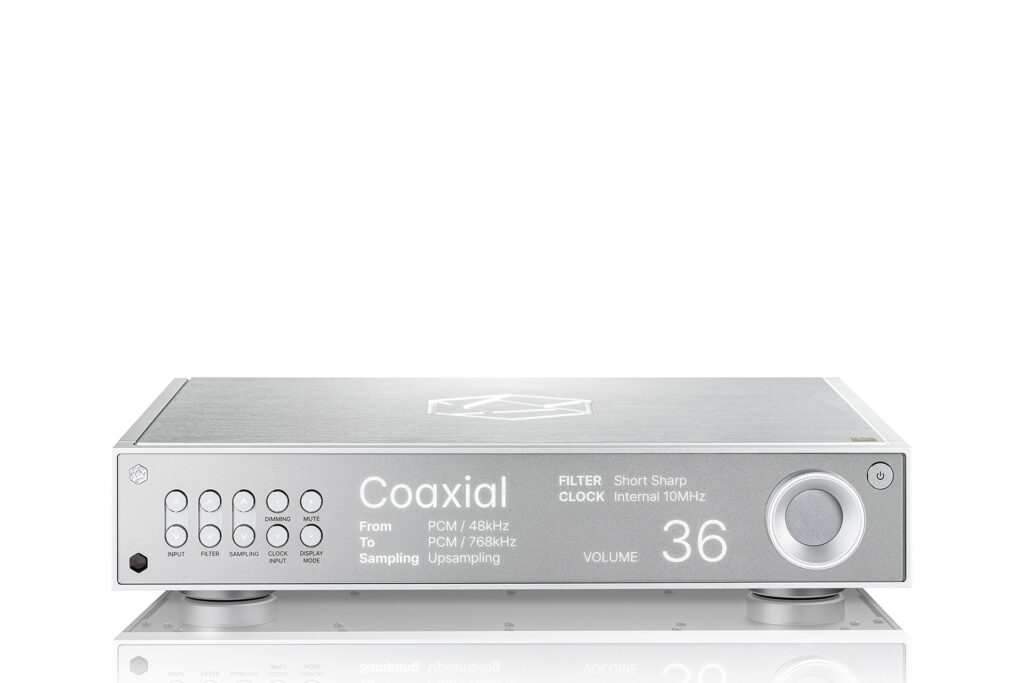
What Makes the HiFi Rose RD160 Audiophile DAC So Special?
- The HiFi Rose RD160 DAC’s case is stunningly made from solid aluminum and rust-proof steel, providing anti-vibration stability and thermal cooling qualities for optimum performance. The fit and finish are remarkable at approximately 17 inches wide, 13 inches deep, and 3.5 inches high. Available in black, like my demonstration unit, or silver, it is worthy of adoration, along with, say, your finest audio components, art, or even furnishings. The casework consists of separate thick aluminum panels with ribbed side panels working as heat sinks.
- On the front panel of the HiFi Rose RD160, between a bank of 10 direct access buttons on the left and the main volume control on the right, sits an eight-inch-wide AMOLED disappearing display that provides a WOW factor and functional information. Unpowered, the HiFi Rose RD160 display is cloaked with its matte finish that resembles the overall casework. Once powered, an array of information startlingly lights up in a horizontal flow chart. Starting from left to right, with input selection, then DAC processing and filter choice (more on this later), output information such as clock, file resolution, a dancing soundwave graphic, and output level, including the option of variable output. After a few seconds of no interaction, the soundwave graphic enlarges and takes over the entire screen. Selecting these options happens with the included remote or from a bank of 10 physical direct access buttons. Due to the many configuration options, the display is very functional.
- The HiFi Rose RD160 chose the AK4199 and AK4399 tandem chipset from their Verita Velvet Sound product line, which is their best technology. The AK4191 manages filtering and Delta Sigma processing, while the AK4499EX performs the digital-to-analog conversion. As far as I know, AKM’s duo is the only off-the-shelf product that breaks out tasks with two separate chips to complete the digital-to-analog conversion process. The design achieves a 124 dB signal-to-noise ratio on coax and XLR outputs. In comparison, alternative DAC chip manufacturers, such as ESS Sabre, Burr Brown, and others accomplish these tasks with a singular chip. The HiFi Rose takes their AKM chip implementation a step further, with a dual mono design, keeping right and left channels physically separate by having two groups of the AKM chipsets: one set for each right and left channel.
- HiFi Rose uses its proprietary Rose CIM Architecture in the RD160. CIM stands for Completely Isolated Module, but what does that mean? CIM physically separates digital and analog stages, lowering crosstalk interference. The CIM Architecture is also a key part of the AKM DAC chipset implementation, separating right and left channel processing and digital-to-analog conversion in a fully balanced design.
- The HiFi Rose RD160 uses three separate power supplies: one for the digital input stage and one for each channel. According to HiFi Rose, separating the power supplies of the RD160 lowers interference and digital noise for optimal sound with impressive dynamics.
- Another HiFi Rose technology implemented on the RD160 is the NRA (Noise Reduction Analog) filter. HiFi Rose indicates NRA provides a flat frequency response across the full frequency range, including the bass region, which tends to roll off with other filter schemes.
- High-quality parts are abundant throughout the HiFi Rose RD160. J-Fet op-amps by Muses offer a wide dynamic range with low distortion, OCXO clocks offer a temperature-controlled operational range for lower timing errors, and internal oxygen-free copper wiring provides clean signal delivery.
- The HiFi Rose RD160 has every conceivable digital input available today. I2S via HDMI connector, USB SFP module, USB 2.0 Type B, Coaxial RCA, Coaxial BNC, Optical, and AES/EBU (XLR) inputs ensure mass compatibility. I am unaware of any transport that won’t connect with the HiFi Rose RD160. For example, some of the most expensive transports in the world do not have an I2S output. The HiFi Rose can handle it with USB or AES/EBU inputs.
- The HiFi Rose RD160 offers both unbalanced RCA and balanced XLR analog outputs. Most enthusiasts prefer XLR balanced outputs, which offer a 6 dB higher output level.
- The HiFi Rose RD160 allows for the addition of an external (aftermarket) clock through BNC connectivity.
- The HiFi Rose RD160 offers four up-sampling options and six filter choices to accommodate different recordings and allow customization preferences. The digital audio file can be up-sampled, converted to PCM (pulse code modulation), DSD (Direct Stream Digital), or bypass processing to output at the original resolution. Additionally, six different digital filter options are available. The bottom line is that you have choices and an opportunity to experiment depending on your music file.
- The HiFi Ros RD160 can convert PCM or DSD files to analog in their native formats. PCM sampling rates from 8 kHz through 768 kHz at eight, 16, 24, and 32 bits per sample. DSD processing from DSD64 up to DSD512 kHz.
- The HiFi Rose RD160 has a variable digital output for volume control, bypassing the need for a preamplifier (we will test this). If you have a preamplifier you like, the user can select various fixed output levels to maximize your components’ performance.
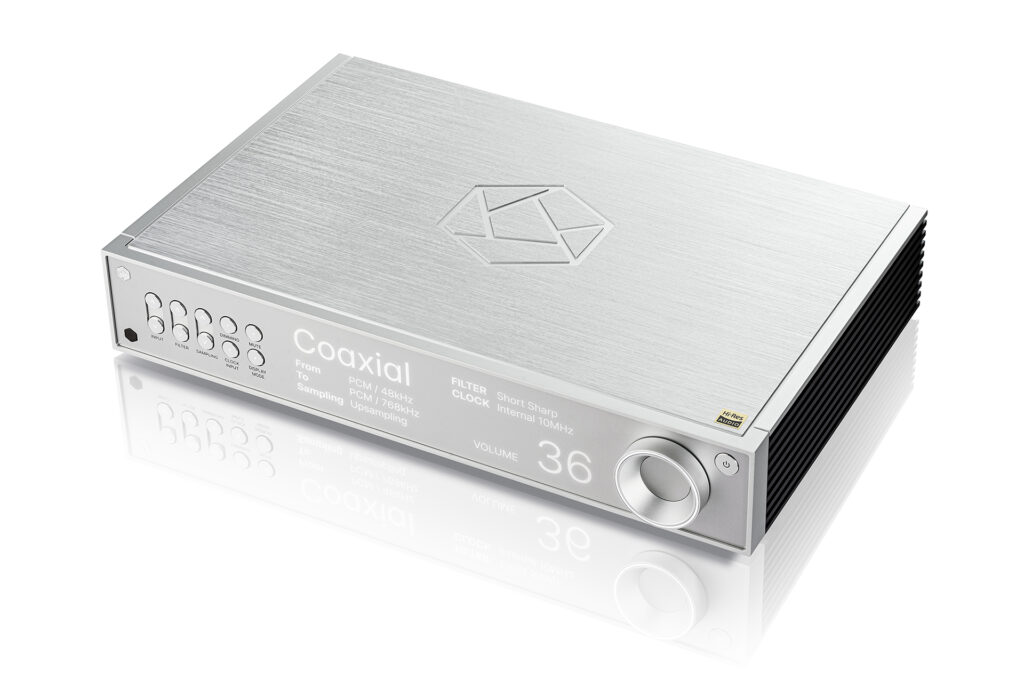
Why Should You Care About the HiFi Rose RD160 DAC?
The HiFi Rose RD160 is a DAC with a ton of functionality, connectivity, and processing power, which would have come at a much higher price just a few years ago. Even some of today’s uber-high-end DACs do not offer the multitude of input connectivity or the panache of the AMOLED display provided by the RD160. While $5,295 is not chump change, it is lower-priced than many DACs with similar pedigrees. It is a celebration when technology and competition come together, providing consumers with lower costs; that is something to care about.
Some Things You Might Not Like About the HiFi Rose RD160 DAC …
- DACs like the RD160 normally allow for a good bit of customization, thus controlling it with an app would be helpful. App control is common for a streamer DAC combination unit. It is less so with a dedicated DAC. While there is a remote, seeing my changes from a seated position is hard. Given that HiFi Rose has an app for their RS130 transport, it would be relatively easy to add RD160 DAC control into their app.
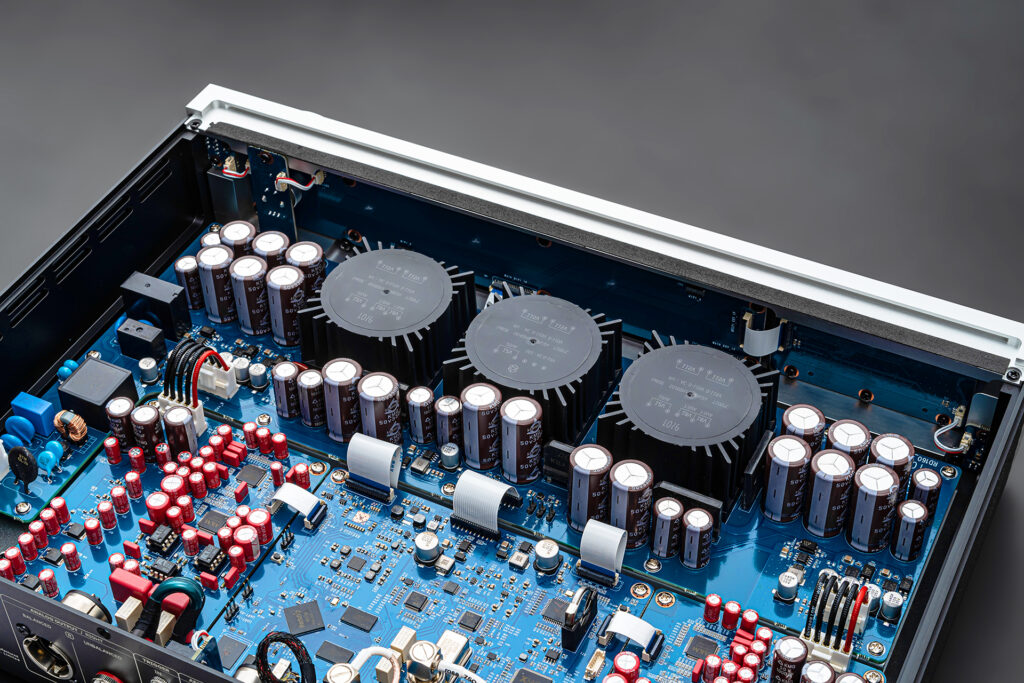
Listening to the HiFi Rose RD160 DAC …
My current reference system is a Pass Labs XP 22 preamplifier (read the review) wired to a set of Pass Labs XA60.8 (read my review) high-current monoblock amplifiers. It operates in full Class-A mode up to 60 watts at eight ohms, doubling power at four ohms and again at two ohms.
For this review, I used the HiFi Rose RS130 Network Transport as the streamer, connecting to the HiFi Rose RD160 DAC by both I2S (HDMI connector) and AES/EBU XLR digital input.
Estelon Aura floorstanding speakers ($20,000 per pair) was the final stage of my system, creating a pretty respectable system to evaluate a serious audiophile digital to analog converter.
The system benefitted from various Wireworld cables, including Eclipse 8 speaker cables, interconnects, and Electra 7 power cables for the amplifiers. A newer cable from Wireworld was the Micro Platinum Eclipse Series 10 AES/EBU XLR digital cable, connected from the RS130 transport to the RD160 DAC.
I listened to many tracks during my time with the HiFi Rose RD160, and my experience can be easily summarized by the following two songs.
“Across the Lines” by Tracy Chapman from her 1987 eponymous album (Qobuz FLAC 16/44.1) provided an opportunity to hear a natural recording with a female voice and simple acoustic and electric instrumentation. The I2S connection made it easy to appreciate the high signal-to-noise ratio with its solid black background and insane clarity. Chapman’s vocals were smooth yet had texture and nuance with an organic sensation. Also, I could hear a rich bassline undercurrent in the track that is not always present with lesser DACs. With the HiFi Rose RD160, it was front and center, creating a believable soundstage with dimensionality – an awe-inspiring presentation. Switching to Roon (learn all about Roon here from Brian Kahn), I felt the performance was similar, perhaps with slightly more bass coherence and improved high-frequency cymbal smoothness and clarity.
The PS Audio Stellar Gold DAC ($3,999 – read the review) was in my possession, which would be a fair comparison to provide some context. For this shootout, I connected each DAC to the HiFi Rose RS130 transport: The PS Audio Stellar Gold utilized its I2S input, and the RD160 received its signal via AES/EBU input. From there, each DAC was connected to the Pass Labs XP22 preamplifier by XLR balanced interconnects on inputs one and two, allowing for easy side-by-side comparison by toggling back and forth. The HiFi Rose RS130 makes this easy, as it outputs a digital signal on both outputs simultaneously. Now, before you cry foul, since one DAC arguably benefits from I2S, understand there was only one I2S output on the transport. Also, the PS Audio Stellar Gold DAC does not have an AES/EBU input. So, by default, I had to give the Stellar Gold DAC that potential advantage of I2S. However, I would also point out that, if a transport and receiving DAC have high-quality AES/EBU output and input components, with thoughtful engineering, it is hard to hear a difference between these two connection types, at least with my current but significant audio system. Could I hear a difference if I upgraded with higher-resolution components and speakers? I will let you know when I get there.
It is worth mentioning that these two DACs use different chipsets in entirely different configurations. The PS Audio is an Octo DAC implementing eight DAC chips, four for each channel, in a parallel configuration where nonlinearities are averaged with the promise of lower distortion and noise.
Continuing with Roon, to my surprise, these two DACs, with two very different designs, sounded remarkably close and, for some who auditioned them, indistinguishable. I walked away, reminding myself of something I already knew: DACs at this level often have diminishing performance returns. Also, I was reminded how great the PS Audio Stellar Gold DAC performs for the money. Ultimately, the RD160 had a slight advantage, with a darker/quieter background, smoother-sounding vocals, and upper frequencies that could hang in the air longer. But the difference was minute.
On the song “Spirits” (Qobuz FLAC 16/44.1) by the Strumbellas, from their 2016 Hope album, a tranquil backdrop allowed the slightly off-key scratchy vocals of Simon Ward to provide a grungy, organic, and raw character that the RD160 was able to sort out without breaking a sweat. Imaging extended beyond the speakers to the right and left, with nice depth and height in between. Instruments portrayed three-dimensional individualism. Again, the difference in the PS Audio Stellar Gold DAC’s performance was almost indistinguishable. The RD160 improved on the upper frequencies, showing a bit more smoothness, but in an ever-so-slight manner.
Switching to HiFi Rose’s digital variable output on the RD160 and connecting it directly to the Pass Lab XA 60.8 amplifiers allowed the bypass of a separate preamplifier. The results were impressive, with the same two tracks, with nothing jumping out at me that was off. Still, the Pass Labs XP-22 was able to extract additional musical information, which translated to additional smoothness in vocals and upper registers, with a little more emphasis on the midrange bass with both DACs.
Will the HiFi Rose RD160 Keep its Value?
The HiFi Rose RD160 breaks barriers in value, given its sophisticated casework, DAC chip selection, implementation, overall build quality, features, and connectivity. It is at the top of its game today, which means it will be a workhorse for years to come, and that means value.
On the other hand, various DAC methodologies continue evolving in pursuit of the best sonic outcomes, with each manufacturer touting that their method is the most superior. The competition is stiff, and technology will continue to evolve. That is just the nature of this component category. However, the HiFi Rose RD160 balances high-quality performance, functionality, and value, which will be relevant for years. Considering that, I suspect the RD160 will experience less average depreciation.
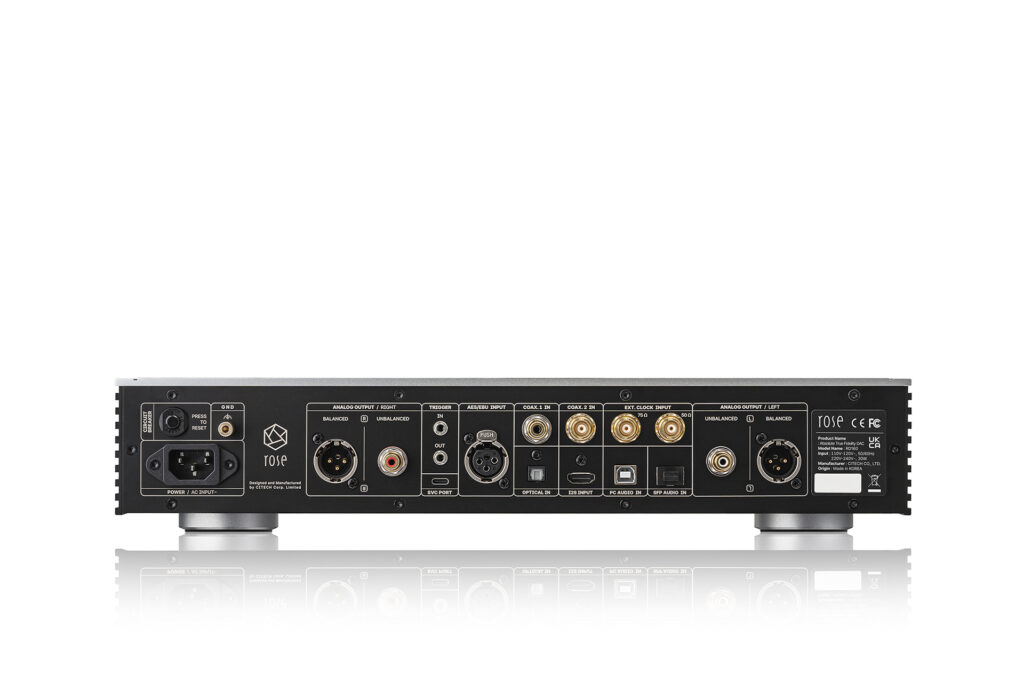
What Is the Competition for the HiFi Rose RD160?
The PS Audio Stellar Gold DAC, as described and compared in this review, is an obvious contender. At $3,999, it is $1,300 less expensive and performs similarly. However, the HiFi Rose RD160 has additional connectivity with the AES/EBU input, which is essential. Additionally, the casework is a step up, along with an elaborate display. Are these features worth the additional spend for the HiFi Rose RD160? For me, yes. But this is a personal decision, and my reasoning does not distract from the fact that the PS Audio Stellar Gold DAC is a high-performing component.
The T+A 200 DAC (read the review), at $7,620, is a couple of grand more expensive, but close enough to the RD160 in price to make it a consideration for some. Based in Germany, T+A is a high-end manufacturer of very high-performance audiophile components. The T+A 200 DAC brings some of its supreme HV line technology to a lower price point, with different processing paths depending on file type: DSD gets a dedicated one-bit processor, while PCM gets eight Burr-Brown DAC chips optimized for multi-bit PCM files. Plus, a well-regarded analog preamplifier comes along for the ride.
The Orchard Audio Pecan Pie + Premium streaming DAC ($1,499, review forthcoming), has the same AKM DAC chipset as the HiFi Rose RD160, which is the only reason I have this product listed here. With a bespoke jitter reduction circuit, my experience with Orchard Audio has proven that they punch way above their weight class. It does not use two sets of digital-to-analog converters constructed in a discrete right and left implementation, nor does it have sophisticated casework, connectivity, or customization capability. Nor does it have the 5k-plus price tag. If you are on a tight budget, don’t mind the DIY-level aesthetic, but still crave a taste of the high life, consider the Pecan Pie + Premium.
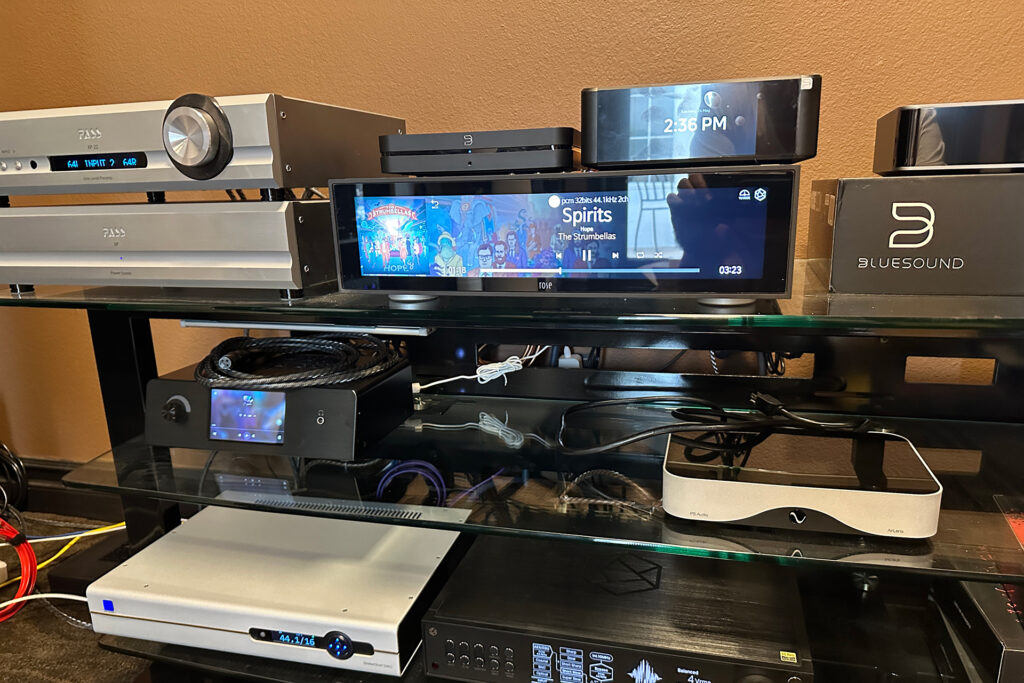
Final Thoughts on the HiFi Rose RD160 DAC …
I found the HiFi Rose RD160 to be a compelling DAC. First and foremost, its high-performance sonics take center stage, followed by high connectivity, valuable features, and impressive build quality. As I mentioned in this review, I was reminded how the differences in audio performance in DACs diminish as the sophistication and price point increase. At least, that has been my experience.
With that said, I found the HiFi Rose RD160 a worthy addition to a sophisticated audio system without a need to seek more. If you are in the market for a foundational DAC, the HiFi Rose RD160 offers a whole lot of performance, as well as pride of ownership, making it worthy of your consideration. Give it an audition, and you will see what I am talking about.
HIFI ROSE RD160 Digital to Analog Converter FAQ
Where is the HIFI ROSE RD160 made?
The HIFI ROSE RD160 is made in South Korea and imported and distributed by MOFI electronics in the United States.
Who is the parent company of HIFI ROSE?
HIFI Rose is its own brand that sometimes is confused in the audiophile community with Mr. Mark Levinson’s Red Rose Audio but they are completely different companies with Red Rose long ago out of business.
What DAC Chipset is used in the HIFI ROSE RD160?
The HiFi Rose RD160 uses the AK4199 and AK4399 tandem chipset which is the current top of the line options from one of the top chip makers in the audio or consumer electronics business.



